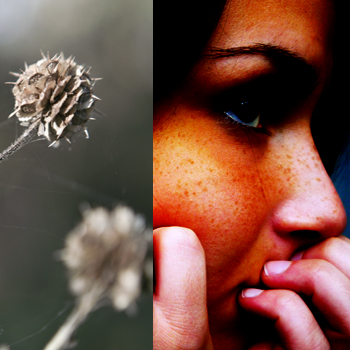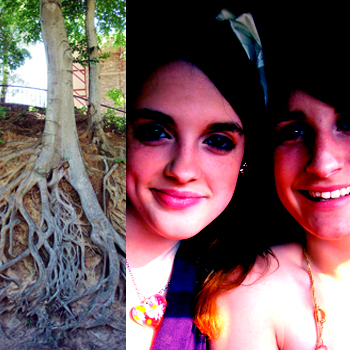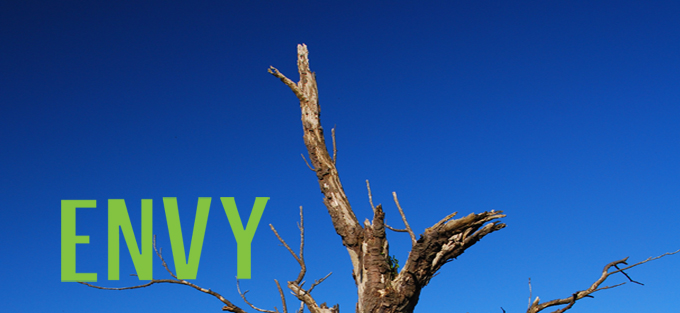by Emily Carson
I experienced my first feelings of envy around the age of 7. I was in second grade at the time. My classmate and friend, Heather, was popular and athletic. Boys loved her. Girls loved her. Teachers loved her. I wanted to be like Heather, and I spent many nights rehashing my feelings with my ever-patient mother.
Envy shines a spotlight on all our self-doubt and insecurity. In my own journey, envy bubbles up in my stomach and makes me queasy and uncomfortable. It shows up at inopportune times. Envy is a gross sort of feeling, and I wish I had a secret recipe to permanently quash it. But I haven’t yet found the cookbook.
 The first time I remember envying another girl’s body was in middle school. Two 8th-grade girls were in front of me in the lunch line, talking about their noses. I’d never considered my nose before. That night when I home, I ran to the bathroom mirror. How could I have missed it all these years? My nose suddenly seemed utterly inadequate. It wasn’t tiny like Rebekah’s. It wasn’t tan like Amber’s. It wasn’t freckled like Abbi’s. My relationship with my nose changed that day, and I began to envy the noses of others.
The first time I remember envying another girl’s body was in middle school. Two 8th-grade girls were in front of me in the lunch line, talking about their noses. I’d never considered my nose before. That night when I home, I ran to the bathroom mirror. How could I have missed it all these years? My nose suddenly seemed utterly inadequate. It wasn’t tiny like Rebekah’s. It wasn’t tan like Amber’s. It wasn’t freckled like Abbi’s. My relationship with my nose changed that day, and I began to envy the noses of others.
Those were the envy seeds, and I’ve been subconsciously watering them for the last couple of decades. I wish I could confirm for you that as a pastor, I no longer experience envy, but that would be entirely untrue. I experience envy every day. Sometimes it’s as a little sprinkle here and there; other times it’s a torrential envy downpour.
Every day, garden variety envy
Envy is common among men and women. Social media, plus constant access to the Internet, means that we now have unprecedented access to the life highlights of our friends, family and even strangers. There’s an endless supply of material to which we can compare our own lives. Young people admit to feeling worse about themselves after they log off of Facebook than they did before they logged on. We’re also bombarded with marketing messages promising to sell us all the ways our bodies, faces and lives could be “better.”
Envy is prevalent, and it’s also painful. Literally. Researchers in Japan studied brain scans of people being prompted with scenarios that would elicit feelings of envy. Their research revealed that envy is expressed in the same portion of the brain as pain. It’s also the same part of the brain where we experience social isolation and exclusion. To feel inferior and to wish we could be more like someone else is to cause our brains to perceive pain.
Not only is envy uncomfortable and painful, it’s also exhausting. One study invited participants to contemplate a wealthy, successful peer. When they finished the exercise, they were asked to complete a puzzle. Another group of participants skipped the envy prompt and went straight to the puzzle. Interestingly, those who spent time in an envious state gave up on the puzzle long before the other group. This study conveys the reality lived out by many of us every day. Longing for a life that is other than our own depletes our energy and sense of self. We end up withered and worn–emotionally, mentally and physically.
The root of envy
So why do we envy? What are the roots? And how do we heal and reroute our brains?
 Evolutionary psychologists assert that some aspects of women’s envy are likely unconscious and biological. Deep inside, a portion of envy and its cousin, competition, are related to our unconscious desire to ensure the survival of our genes. Beauty and youth may be qualities we envy because we subconsciously believe these attributes represent a woman’s increased chance of reproductive success. That causes sensations of envy and competition because deep inside our cells, we don’t want to be the last ones invited to the “Perpetuation of the Gene Pool” party.
Evolutionary psychologists assert that some aspects of women’s envy are likely unconscious and biological. Deep inside, a portion of envy and its cousin, competition, are related to our unconscious desire to ensure the survival of our genes. Beauty and youth may be qualities we envy because we subconsciously believe these attributes represent a woman’s increased chance of reproductive success. That causes sensations of envy and competition because deep inside our cells, we don’t want to be the last ones invited to the “Perpetuation of the Gene Pool” party.
I wouldn’t doubt that some of these evolutionary, biological roots are probably at least partially at play. In my own journey, there does seem to be something instantaneous and illogical about envy…and it often happens before I even realize what has occurred.
These snap judgments start in the brain’s fear center, the amygdala, and they happen in less than one-tenth of a second. Dr. Amit Sood discusses retraining our amygdala in his book, “The Mayo Clinic Guide to Stress-Free Living,” page 80. Instead of snap judgments about other people–which often lead to envy–we can opt to engage our relationships from a more rooted, intentional vantage point.
Disengaging from the corrosive aspects of envy begins with reframing how we think about ourselves. When we envy, we want what someone else has, which implies perceived lack. Whether it’s about bodies, brains, finances, or relationships, envy stems from a belief that we are inadequate. So to get past envy, we have to move away from any notion of scarcity. We have to believe we are enough.
The better we feel about ourselves, the less likely we are to be rocked by envious waves. In addition to finding ways to improve our own sense of self, we can also shift from an envy-based, competitive instinct to a more supportive approach. I recently saw a t-shirt that said, “Her success is my success.” Amen to that! As women, our support for one another is deeply beneficial on both personal and global levels. Research shows that strong female friendships facilitate better stress management and even increased longevity!
Limiting our brain’s exposure to envy provides more space for support, love, and appreciation–for ourselves and others. As spring begins, may we nurture these healthy seeds.
Discussion questions:
1. In what surroundings are you most likely to feel envy?
2. In what surrounding are you most likely to feel confident and secure?
3. What insight from this article might you carry forth into the month ahead?
Closing prayer:
God who understands, help us overcome our envy instincts. Lead us to view ourselves with self-compassion so that we can extend support and compassion to others. Amen.
The Rev. Emily Carson serves as director of communications for the Southeastern Minnesota Synod and weekly columnist for the Rochester Post-Bulletin. Her hobbies include hiking, writing and growing vegetable sprouts indoors. Emily’s blog is www.holyeverything.com.
Photos by Robert Young, Martin La Bar and Aju Photography. Used with permission.


I readly liked the information on envy.
Thank you
Thank you, Emily, for this interesting and important topic.
I mentor a wonderful group of young moms of preschoolers and can’t wait to share this post with them as a devotion. We need to be aware of how we respond to situations and others in order to see our way to claim our identity as unique and beautiful children of God and also help our own children to navigate the muddied waters of youth. Thank you for your work!
Great discussion points along with a wonderful t-shirt siting, “Her success is my success!”
A beautiful reminder that we are all created in God’s image. We are enough!